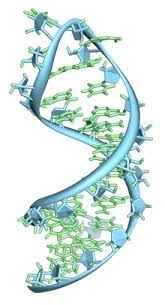Courtesy :Bachelor of Science Biotechnology (CBT) – Chemistry, Botany, Biotechnology Library
Safety concerns and regulation
Bio-hazard research limitations
The National Institute of Health declared a research funding moratorium on select Gain-of-Function virus research in January 2015. In January 2017, the U.S. Government released final policy guidance for the review and oversight of research anticipated to create, transfer, or use enhanced potential pandemic pathogens (PPP). Questions about a potential escape of a modified virus from a biosafety lab and the utility of dual-use-technology, dual use research of concern (DURC), prompted the NIH funding policy revision.

GMO lentivirus incident
A scientist claims she was infected by a genetically modified virus while working for Pfizer. In her federal lawsuit she says she has been intermittently paralyzed by the Pfizer-designed virus. “McClain, of Deep River, suspects she was inadvertently exposed, through work by a former Pfizer colleague in 2002 or 2003, to an engineered form of the lentivirus, a virus similar to the one that can lead to acquired immune deficiency syndrome, or AIDS.” The court found that McClain failed to demonstrate that her illness was caused by exposure to the lentivirus, but also that Pfizer violated whistleblower protection laws.

Health applications
Gene therapy
Gene therapy uses genetically modified viruses to deliver genes that can cure diseases in human cells. These viruses can deliver DNA or RNA genetic material to the targeted cells. Gene therapy is also used by inactivating mutated genes that are causing the disease using viruses.
Viruses that have been used for gene therapy are, adenovirus, lentivirus, retrovirus and the herpes simplex virus. The most common virus used for gene delivery come from adenoviruses as they can carry up to 7.5 kb of foreign DNA and infect a relatively broad range of host cells, although they have been known to elicit immune responses in the host and only provide short term expression. Other common vectors are adeno-associated viruses, which have lower toxicity and longer term expression, but can only carry about 4kb of DNA. Herpes simplex viruses is a promising vector, have a carrying capacity of over 30kb and provide long term expression, although it is less efficient at gene delivery than other vectors. The best vectors for long term integration of the gene into the host genome are retroviruses, but their propensity for random integration is problematic. Lentiviruses are a part of the same family as retroviruses with the advantage of infecting both dividing and non-dividing cells, whereas retroviruses only target dividing cells. Other viruses that have been used as vectors include alphaviruses, flaviviruses, measles viruses, rhabdoviruses, Newcastle disease virus, poxviruses, and picornaviruses.

Although primarily still at trial stages, it has had some successes. It has been used to treat inherited genetic disorders such as severe combined immunodeficiency rising from adenosine deaminase deficiency (ADA-SCID), although the development of leukemia in some ADA-SCID patients along with the death of Jesse Gelsinger in another trial set back the development of this approach for many years. In 2009 another breakthrough was achieved when an eight year old boy with Leber’s congenital amaurosis regained normal eyesight and in 2016 GlaxoSmithKline gained approval to commercialise a gene therapy treatment for ADA-SCID. As of 2018, there are a substantial number of clinical trials underway, including treatments for hemophilia, glioblastoma, chronic granulomatous disease, cystic fibrosis and various cancers. Although some successes, gene therapy is still considered a risky technique and studies are still undergoing to ensure safety and effectiveness.



